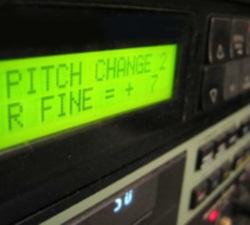
One secret to learning how to use effects tastefully is to listen very closely to your favorite albums and model how they are used. What effects are used, on what sound sources, and how loud are the effects in the mix?
A good model for your live worship music mix can be found in your favorite contemporary Christian music and live worship recordings. You’ll hear very tasteful use of effects. Carefully analyze how the engineer achieved that sound, and then simply emulate and incorporate those ideas into your own services. It’s helpful to set up your reverb device so that you can easily adjust the reverb time for each song.
Who says your effects settings need to stay the same throughout the service? I’m a strong believer in manipulating the effects to suit the song, even if that means making changes between every song.
Let’s say that you’ve set the reverb time for a long decay that sounds great for a slow, worshipful song. But if the next song happens to be an up-tempo praise song, that long decay is going to make your mix sound muddy.
By comparison, if you have the decay set fairly short so it works great for a fast moving song, that reverb sound will seem unnatural and out of place during a slow moving song. The idea is to let the reverb decay get out of the way before the next beat. In other words, count along or pat your leg with the tempo of the song, and find a reverb time setting that will decay in one beat.
Or grab a microphone and click your tongue in tempo with the song to excite the reverb, and make sure that the decay isn’t spilling too far into the next beat. This process is clearly entertaining for your friends and relatives. Do this during rehearsal for each song, and mark the reverb time settings on your song set list. Then you’ll easily be able to make the appropriate adjustments throughout the worship set.
It’s not worth getting too detailed about this. If two or three songs have roughly the same tempo, I’ll leave the reverb time setting alone. But I will change it if the tempo changes substantially. If the song has already started and you didn’t get to do this during rehearsal, use the beat of the snare drum or even the worship leader’s vocal to help you set the reverb time.
I love to add a delay on occasion to individual elements like the lead vocal, a saxophone or guitar solo, or sometimes to the backing vocals. Carefully used, it can add tremendous depth to the mix. Here again, pay attention to the tempo of the song, and set the repeat time of the delay to match the tempo of the song.
The delay effect can be a powerful enhancement to the song, or a chaotic distraction. A seasoned sound operator will set the timing of the repeat to the tempo of the song, and adjust the number of repeats to the level of the effect to blend with the song. Too loud and/or too many repeats and it’s in the way, too soft and it won’t be appreciated. Your mix will be cleaner if you keep the repeats back to one or two.
